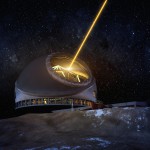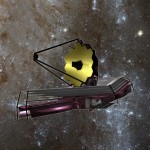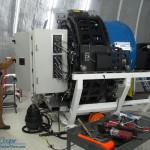Opponents of the Thirty Meter Telescope attack the telescope in any way possible. Any argument is fodder in social media and newspaper editorials. Many of these arguments depend on a superficial level of knowledge about astronomy, this claim is a good example of this.


The claim is that a ground based telescope like TMT is not needed as a space telescope is more capable. Why spend the money? Why build TMT on Mauna Kea?
Given the stunning accomplishments of the Hubble Space Telescope this sounds plausible. This argument also ignores a number of fundamental realities in telescope design and use. Both have their limitations and we will discuss some of the more important ones here.
Certainly a telescope in space has a number of advantages over a ground based telescope. Not having an atmosphere to look through helps, it helps a lot. This is countered by the way ground based telescopes have developed solutions to overcome those limitations. The limitations on a space telescope are not created by the atmosphere and as such are far more practical and daunting.
Why does the atmosphere matter? There are two major issues. The first is that turbulent air over the telescope will blur the image, something astronomers call ‘seeing’. Look at a star using high magnification in even a small telescope and you will not see a pinpoint of light, you will see a dancing, shimmering blob. Seen from the ground stars twinkle.
The second challenge created by the atmosphere is absorption of the light. Some wavelengths of light, including many that are interesting to astronomers are blocked by the atmosphere. We think of air as transparent, and it is in the optical wavelengths, the read, green, and blue our eyes use. Other wavelengths? Not so much.
The result is that for and astronomer wishing to observe some sections of the spectrum such as the far infrared, much of the ultraviolet, x-rays, or gamma rays, there is no choice but to put a telescope into space. And we have done just that with a range of space telescopes.
There is only one way a ground based telescope can address the absorption issue, choose a good site. The higher the site is, the drier the site is, the better it is. This is one of the main reasons Mauna Kea is the preferred site for TMT. For an optical and infrared telescope like TMT the site will offer an undimmed view of the universe across most of the wavelengths the telescope will operate at.
The atmospheric distortion, the blurring, can be dealt with using a complex system that corrects the distortion. This is an adaptive optics system, and all large telescopes are equipped with such systems. These systems allow the telescope to operate much nearer their full potential and gather the sharpest images possible.
AO systems are not perfect, they can only correct so much. Thus it is imperative that the site be as good as possible, that the natural quality of the sky be good to start with, the AO systems can then turn good into superb.
The size of a telescope is critical. Signal to noise improves with the square of the telescope size. Thus TMT will have 21 times the light gathering capability of the 6.5 meter James Webb Space Telescope. Resolution, the finest detail that can be seen goes up with the size as well, with TMT having 4.6 times the resolution of JWST.
Thus, despite looking thought the atmosphere a properly sited, AO equipped large telescope can drastically outperform a space based telescope.
Why not just build a thirty meter space based telescope? Cost.
JWST has run up impressive cost overruns. Putting a telescope into space is incredibly challenging, and thus costly. The mission will probably be close to $9 billion on launch, and $10 billion over the lifetime of the telescope.
Another serious problem is the difficulty of repair. The Hubble Space Telescope was famously repaired on several occasions. Each repair mission took a space shuttle launch, around two hundred million dollars, with untold effort by hundreds of people. Repairing a large ground based telescope requires two guys and a pickup truck.
JWST cannot be repaired. Its orbit will be out of reach of any of our current manned launch capability.
JWST cannot be upgraded. Ground based telescopes are continuously upgraded with new instruments and new equipment. As parts of the facility age they can be replaced. As a result the service lifetime of a ground based observatory can be up to a century, vastly more return for the investment.
As new technology becomes available it can be installed in a ground based telescope, new instruments are delivered every few years that keep the telescope on the leading edge of technology.
If new discoveries require new ideas and capabilities to follow up, it is possible to modify or replace the instrumentation of a ground based observatory to explore something that was unanticipated by the telescope builders.
The result is that large ground based telescopes can, with some limitations, dramatically outperform a space based telescope. Both are valuable, but more fundamental science is done at the large ground based telescopes, for far less cost. Often both space telescopes and ground based telescopes will work together to study the same problem, each providing critical data.
Result: Mostly False


